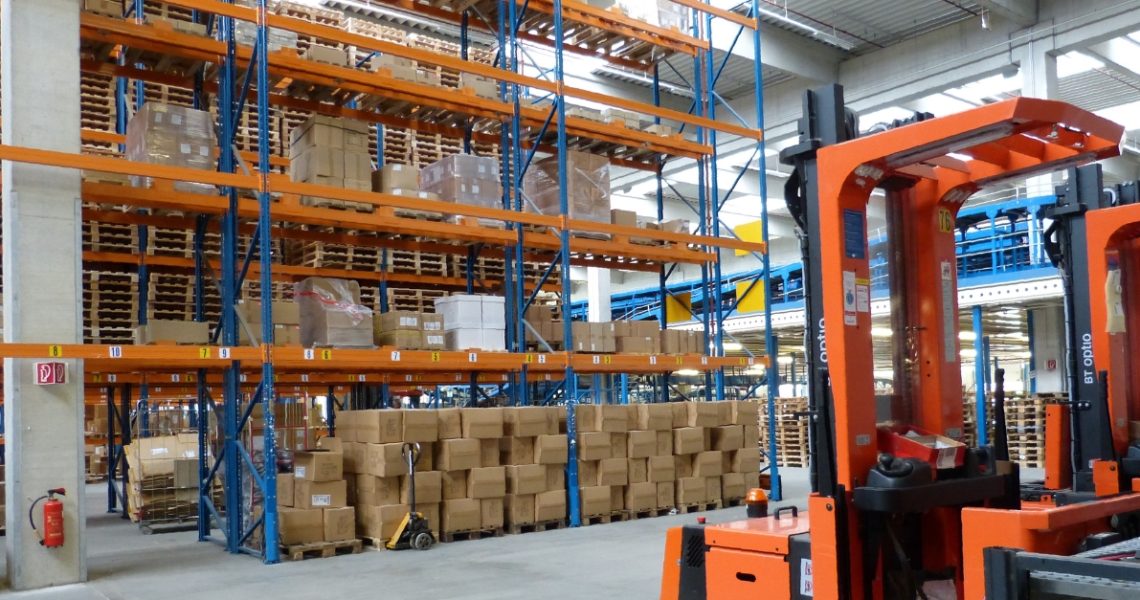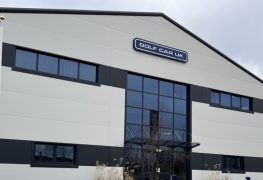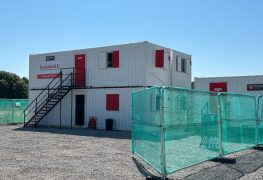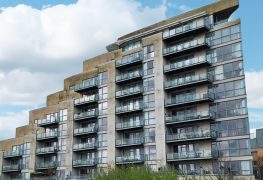Warehouse construction is going through a period of significant change. On one hand, there’s real opportunity: growth in online retail and the ongoing demand for efficient logistics space mean warehouses remain a solid investment. But with that opportunity comes risk. Energy efficiency regulations are tightening quickly, and a large proportion of existing warehouses will soon fall below the minimum legal standard for leasing. Developers and investors who don’t think ahead could find themselves holding assets that are expensive to upgrade or difficult to let or sell.
Recent analysis by Knight Frank suggests that around 18% of UK’s warehouses may not meet upcoming energy performance standards, making them unlettable by 2027, rising to 60% by 2030, unless upgraded to meet new EPC (Energy Performance Certificate) requirements. The minimum EPC rating for commercial leases increased to E in April 2023, will rise to C by 2027, and must reach B by 2030.
What Does this Mean for Developers and Investors?
Careful planning is essential.
With the market evolving and regulations tightening, getting a warehouse project right first time has never been more important. From rising material and labour costs to stricter energy regulations, you need an experienced team to help mitigate these challenges. While the construction itself may appear straightforward, small issues can quickly escalate, leading to cost overruns and programme delays that erode return on investment.
At Evolution5, we work with developers, investors and occupiers to identify these challenges early, manage risk, and keep projects moving efficiently from planning through to completion.
Let’s look at five common warehouse construction challenges, and, more importantly, how our team helps clients overcome them.
1. Rising Material Costs
One of the biggest challenges facing warehouse projects today is the ongoing rise in material costs. Steel, concrete, and cladding have all seen significant price increases over recent years. Unlike more complex building types where costs can be absorbed across different trades and finishes, warehouses rely heavily on these core materials, so price fluctuations have a direct impact on overall budgets.
Linked closely to material costs are lead-in times, particularly for steelwork. Larger warehouses require substantial quantities of steel and securing this in the current market can take significantly longer than expected. Delays in procurement not only extend the construction programme but can also expose the project to further cost escalation if prices continue to rise during the wait.
Evolution5 helps clients manage these risks through early cost planning and robust procurement strategies. For warehouse projects, we typically recommend a single-stage competitive tender approach that delivers the most competitive price without compromising programme or quality. This ensures every pound spent delivers maximum value.
2. Infrastructure and Utilities Constraints
With warehouses often being located on industrial estates or out-of-town plots, access to key services isn’t always straightforward. Gaining power supply, water, drainage and data connections can all impact how quickly a project can progress.
Securing adequate three-phase power is a common stumbling block, particularly for larger distribution centres or manufacturing facilities with high energy demands. In some cases, the local network simply can’t accommodate the load, resulting in long connection lead times and costly upgrades. Even smaller details, such as routing fibre connections or coordinating with utility providers, can cause unexpected programme delays if not managed early.
Through early engagement with statutory providers and careful coordination of design information, we reduce the risk of delays and ensure that essential services are available when needed.
3. Sustainability and Compliance Requirements
Building warehouses sustainably is a growing priority but achieving it can be challenging. While modern standards demand energy-efficient designs, renewable systems and improved insulation, these features can add cost to what is traditionally a cost-sensitive type of project.
Balancing sustainability goals with budget expectations requires experience and careful planning. Developers who treat sustainability as an afterthought often find themselves making reactive, expensive changes late in the design or procurement stages.
By incorporating sustainability measures early, our team make sure they’re deliverable, practical and cost-effective. This not only helps future-proof the asset but also strengthens its long-term value and appeal to occupiers.
By considering the whole lifecycle of a project, sustainability can reduce environmental impact while maximising return on investment. A well-planned, sustainable building provides lasting value, standing the test of time financially and physically.
4. Speed to Market
For most warehouse projects, time is money. Whether the aim is to secure a tenant quickly, start generating income, or meet operational deadlines, speed to market is critical.
Warehouse builds are relatively straightforward, so clients assume they can be delivered quickly. However, even simple projects can be held up by slow decision-making, delayed procurement, or poor sequencing on site. When rental income or operational turnover depends on completion, every lost week impacts the financial return.
Our project managers focus on realistic scheduling, proactive risk management, and contractor coordination to keep projects on track. We also recognise where time savings can be made without compromising on quality or compliance.
5. Procurement and Value Management
Warehouse schemes are often described as “simple builds,” but that doesn’t mean procurement should be taken lightly. With rising costs, tight margins and limited opportunities to add design value, every procurement decision affects the bottom line.
A well-structured procurement strategy helps you achieve best value, not just the lowest price. Warehouses lend themselves well to single-stage competitive tendering, as design details are straightforward and easy to quantify. However, poor tender documentation or unclear scopes can still result in cost variations and disputes later.
Evolution5’s cost consultancy team supports clients with detailed tender preparation, transparent cost analysis, and value engineering advice. We make sure each trade package is clearly defined and priced correctly, helping to avoid surprises during construction and ensuring the outcome represents genuine best value.
Project Spotlight: Golf Car UK Headquarters, Andover
An example of Evolution5’s expertise in action is the new headquarters for Golf Car UK in Andover. The project involved the construction of a new industrial warehouse with ground and first-floor offices, a mezzanine floor, concrete service areas, external storage zones, a landscaped car park, and an external precast concrete security wall.
Evolution5 provided both Construction Management and Quantity Surveying services, ensuring the project stayed on programme and on budget.
Maximise ROI on your Warehouse Project
Warehouse projects demand a careful balance of cost, time and compliance. With rising material prices, infrastructure constraints, tighter sustainability standards and increased pressure on delivery, experience matters more than ever.
Whether you’re building a new warehouse or upgrading an existing site, our consultancy services give you confidence from the project start. Let us anticipate challenges, manage risk, and protect your investment, so your project delivers the best possible return
Frequently Asked Questions
1. What are the Key Challenges in Warehouse Construction?
Warehouse construction may seem straightforward, but several factors can derail projects if not managed carefully. Key challenges include rising material costs and lead times, tightening energy efficiency regulations, and complex procurement requirements. Small issues in these areas can quickly escalate into cost overruns or delays, impacting the return on investment.
2. How can I Maximise ROI on my warehouse project?
Maximising ROI requires careful planning, risk management, and expertise. Evolution5 helps clients anticipate challenges, manage budgets, and optimise procurement. Early cost planning, single-stage competitive tendering, and strategic project management ensure every pound spent delivers maximum value.
3. How can I Increase Speed to Market for our Warehouse build?
Speed to market is crucial for warehouse projects to start generating income quickly. Evolution5 supports fast, efficient delivery through proactive project management, early engagement with contractors and utilities, and coordinated procurement strategies. We help clients streamline planning, avoid delays, and keep construction moving smoothly from site preparation to handover.
4. Does Evolution5 support warehouse projects?
Yes. Evolution5 provides full consultancy, project management, and cost management services for warehouse construction. From initial concept and planning approval to procurement and construction management, we guide clients through every stage. Our approach ensures projects are delivered efficiently, on budget, and to the highest standards of quality and compliance.
5.What are some examples of Evolution5’s warehouse projects?
A notable example is the Golf Car UK headquarters in Andover. Evolution5 provided Construction Management and Quantity Surveying services, managing site preparation, drainage, car park formation, and structural steel delivery to keep the project on programme and budget.





